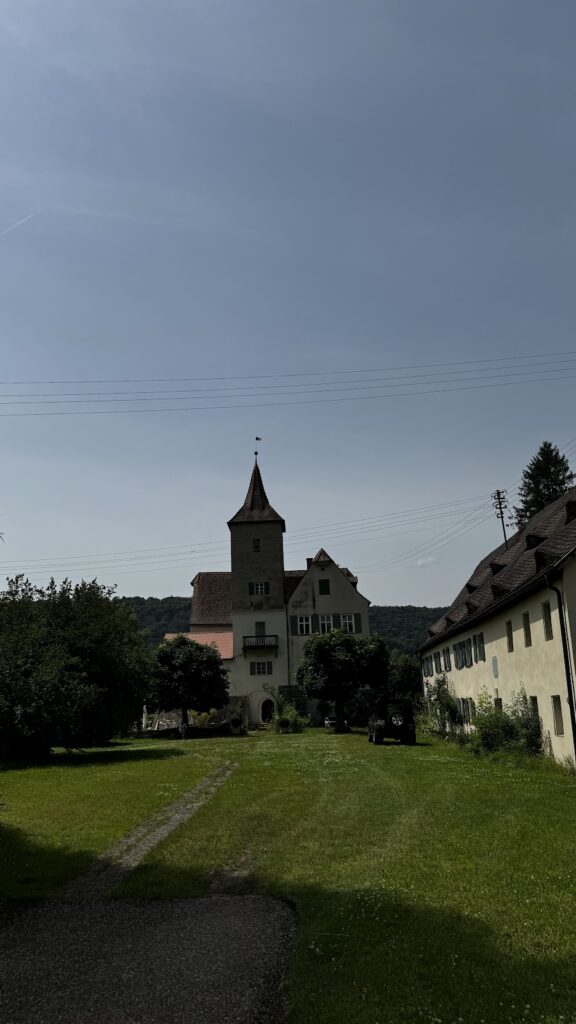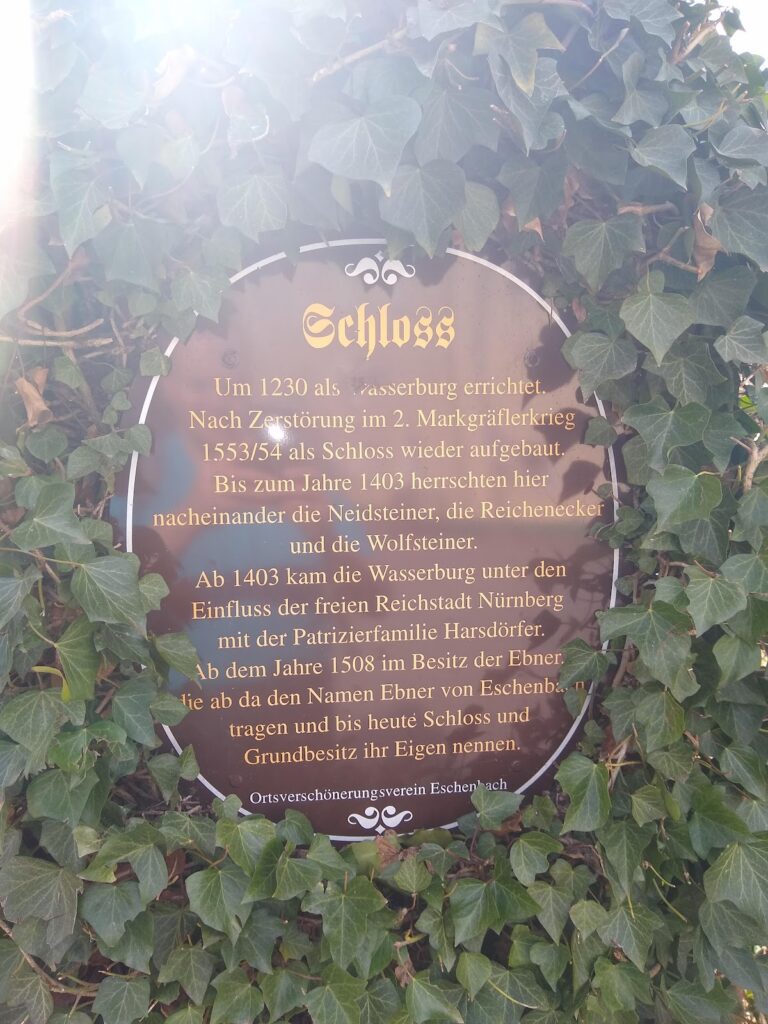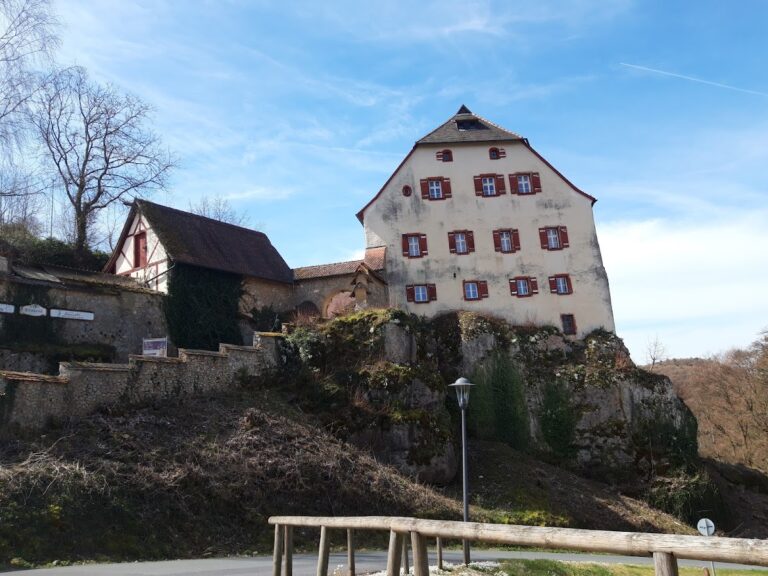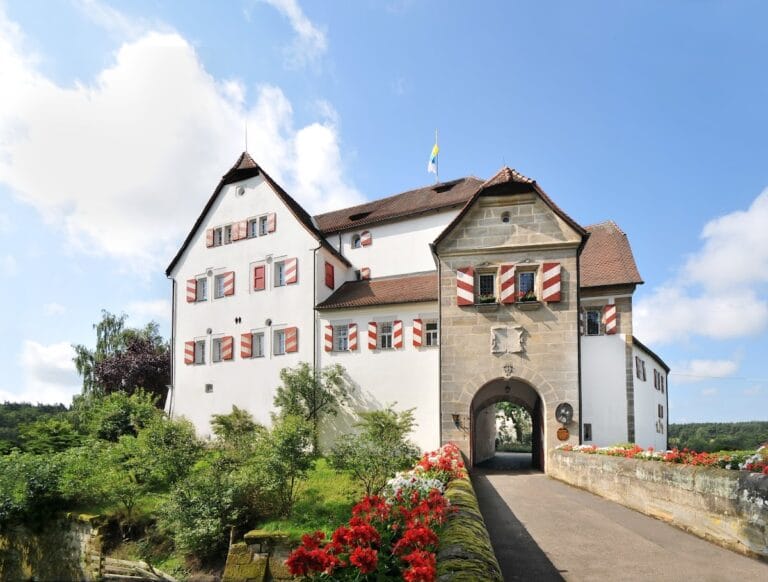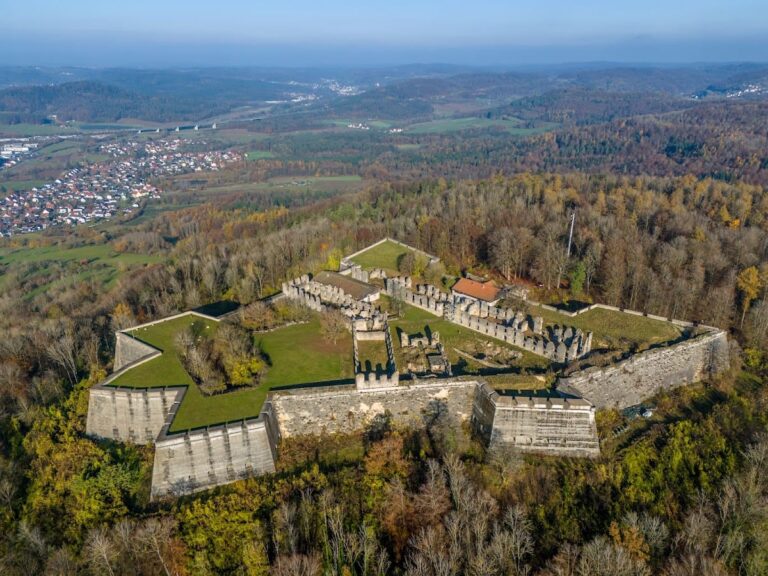Eschenbach Castle: A Historic Water Castle in Pommelsbrunn, Germany
Visitor Information
Google Rating: 3.8
Popularity: Very Low
Google Maps: View on Google Maps
Country: Germany
Civilization: Unclassified
Remains: Military
History
Eschenbach Castle is located in the municipality of Pommelsbrunn in present-day Germany. It was originally built by a medieval Germanic noble class as a water castle, designed to be surrounded by water for defensive purposes.
The earliest phase of the castle dates back to 1230, when it was established as a water castle within a landscape controlled by imperial ministeriales families. These families, such as the Hartenstein and Neidstein lineages, acted as local officials under the authority of the Bishopric of Bamberg, which maintained feudal rights over the area until the early 19th century. During this period, ownership of the castle passed through several ministeriales families. The Eschenbach family, also known as Eschenbecken, held it initially from about 1230 or 1238. After 1330, the Türriegel family took possession, followed by the Erlbeck family in 1367. The latter pledged the estate to Walter III Schenk of Reicheneck, indicating political and economic transactions among regional nobles.
By the early 15th century, the castle’s ownership shifted through purchase to a member of Nuremberg’s emerging economic class. Heinrich Harsdörffer, a mining entrepreneur from the Free Imperial City of Nuremberg, acquired the estate before 1403. This transition brought the castle under Nuremberg’s sovereignty. The Harsdörffer family retained the property for about a hundred years until 1511, when through marriage it passed to the Ebner family. The Ebners would largely remain the guardians of Eschenbach Castle for centuries to come.
In the mid-16th century, Eschenbach Castle suffered destruction during the Second Margrave War around 1552. Forces loyal to Margrave Albrecht Alcibiades attacked the castle and destroyed it after the owners refused to pay ransom. The castle was then rebuilt by Hans IV Ebner in 1554, taking on the form largely preserved today.
The 17th century saw a brief change in ownership when the castle was sold to Johann Friedrich von Wimpffen between 1667 and 1676. However, following his financial ruin and imprisonment, the property was reacquired by the Ebner family, who continued their long-standing association with the site.
Today, Eschenbach Castle stands as a historic monument protected under Bavarian law, recognized for its architectural heritage as well as its archaeological significance.
Remains
Eschenbach Castle’s layout preserves much of the structure shaped during the mid-16th century reconstruction following its destruction in war. The castle’s core consists of a three-story main residential building, or Palas. The ground floor masonry of this building includes stonework that may date back to the original 13th-century construction, providing a direct link to the castle’s earliest phase.
Attached to the Palas, a three-story wing was added on the northeast corner soon after 1554, expanding the living and functional space. Economic buildings essential for the castle’s operation were constructed within the outer bailey by 1559, illustrating the estate’s self-sufficiency during this period.
Originally, the castle was surrounded by a defensive outer wall featuring four round towers. Most of this wall was removed around 1830, with one tower on the west side surviving and later restored in 1863. Known as the “Fuchsen-Turm,” this tower historically served as a prison. The survival and restoration of this tower provide valuable insight into the castle’s medieval defensive features and its use for detaining prisoners.
Between 1736 and 1740, the surrounding moat that once encircled the castle was filled in. On the southern side of the castle’s inner courtyard stands a remaining defensive wall topped with battlements, offering evidence of the castle’s fortified nature.
A distinct architectural addition is the pointed helmet tower, or Spitzhelmturm, constructed in 1885. This tower enhances the castle’s skyline and reflects stylistic elements introduced in the late 19th century.
Inside the castle, an ancestral hall dating from around 1730 houses a collection of oil portraits depicting members of the Ebner family. This room serves as a focal point for the castle’s continuous role as a family residence and a repository of its own history.
The castle’s siting between the Hirschbach stream to the southeast and the Pegnitz river to the southwest emphasizes its original water-bound defenses, a characteristic feature of Wasserburg, or water castles. This strategic placement in the landscape provided natural barriers and contributed to the site’s defensibility over the centuries.
